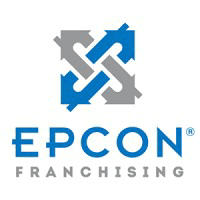Not sure if The Agency is right for you?
Talk to a Franchise Advisor who can match you with your perfect franchise based on your goals, experience, and investment range.
Talk to an Expert
The Agency
How much does The Agency cost?
Initial Investment Range
$12,550 to $896,150
Franchise Fee
$2,000 to $48,700
The franchise offered is to establish and operate real estate brokerage offices under the name The Agency®, as part of a network of real estate brokerage businesses that cater to high-end real estate buyers and sellers worldwide.
Enjoy our partial free risk analysis below
Unlock the full risk analysis to access 9 more categories covering 100+ risks.
The Agency April 28, 2025 FDD Risk Analysis
Free FDD Library AI Analysis Date: July 16, 2025
DISCLAIMER: Not Legal Advice - For Informational Purposes Only. Consult With Qualified Franchise Professionals.
Franchisor Stability Risks
Start HereDisclosure of Franchisor's Financial Instability
High Risk
Explanation
The Agency Real Estate Franchising, LLC (TAREF) explicitly discloses its financial condition as a special risk. The audited financial statements in Exhibit G show the company operates with virtually no cash, relying entirely on large financial transfers from its parent company. This high degree of dependency creates a significant risk, as any financial trouble at the parent level could directly impact TAREF’s ability to provide support and meet its obligations to you.
Potential Mitigations
- An experienced franchise accountant must analyze the consolidated financials of the parent company, RealTech Holdings, Inc., if available, to assess its stability.
- Your attorney should investigate the legal and financial relationship between TAREF and its parent, including any formal support agreements.
- Discussing the company's capitalization and financial strategy directly with the franchisor's management may provide additional clarity.
High Franchisee Turnover
High Risk
Explanation
Item 20 data reveals a high rate of franchisee terminations in 2022, representing over 18% of the outlets that started the year. While the rate appears lower in subsequent years, this earlier spike could indicate potential systemic challenges, franchisee dissatisfaction, or issues with profitability or support within the system. Understanding the reasons for these departures is crucial for assessing the health and stability of the franchise network.
Potential Mitigations
- It is critical to contact former franchisees listed in Exhibit J to understand their reasons for leaving the system; your attorney can help prepare questions.
- A business advisor can help you analyze the turnover rates in the context of the system's rapid growth and industry norms.
- Question the franchisor directly about the circumstances surrounding the terminations and what steps, if any, were taken to address the underlying issues.
Rapid System Growth
Medium Risk
Explanation
The franchise system has experienced very rapid growth, expanding from 11 to 54 franchised outlets in three years according to Item 20. Such rapid expansion can strain a franchisor's resources, potentially impacting the quality and availability of essential support, training, and operational guidance for all franchisees. This risk is amplified by the franchisor's financial dependence on its parent company, as disclosed in the FDD.
Potential Mitigations
- A business advisor should help you assess whether the franchisor's support infrastructure has scaled appropriately with its unit growth.
- Interviewing a mix of new and established franchisees from the list in Exhibit J is essential to gauge the current quality of franchisor support.
- Your accountant can review the financials to assess if sufficient capital is being reinvested into support systems.
New/Unproven Franchise System
Low Risk
Explanation
This risk was not identified in the FDD package. An emerging or new franchise system presents higher risks because its business model, brand recognition, and support infrastructure are not yet proven over time. Prospective franchisees in such systems face greater uncertainty regarding long-term viability and profitability, as the franchisor may still be refining its operational and support processes.
Potential Mitigations
- A thorough investigation of the founders' and management's prior experience in both the specific industry and in franchising is recommended; a business advisor can help.
- Speaking with the very first franchisees to open is crucial for understanding the early challenges and the franchisor's responsiveness.
- An accountant should carefully scrutinize the franchisor's capitalization to ensure it has sufficient funds to support its initial growth phase.
Possible Fad Business
Low Risk
Explanation
This risk was not identified in the FDD package. A business model heavily reliant on a current trend or fad carries the risk of a sharp decline in consumer interest over the long term. If a franchise is tied to a fleeting trend, you could be left with a business that is no longer viable once public interest wanes, even though your contractual obligations to the franchisor for fees and operations continue for the full term.
Potential Mitigations
- Engaging a business advisor to research the long-term market demand and sustainability for the products or services offered is a crucial step.
- It is wise to investigate the franchisor's plans for innovation and adaptation to stay relevant beyond the initial trend.
- An accountant can help you model the financial risks if consumer demand were to decrease significantly.
Inexperienced Management
Low Risk
Explanation
This risk was not identified in the FDD package. The key executives listed in Item 2 appear to have substantial experience in the real estate industry. However, it's important to distinguish between general industry experience and specific experience in managing a franchise system, as the skill sets required can be different. A lack of direct franchising experience in management could potentially affect the quality of support and systems provided to franchisees.
Potential Mitigations
- A business advisor can help you further investigate the backgrounds of the management team, focusing on their experience with franchise operations.
- Asking current franchisees about their direct experiences with the management team's support and strategic direction is highly recommended.
- Inquiring with the franchisor about any franchise-specific consultants or advisors they may use can provide additional comfort.
Private Equity Ownership
Low Risk
Explanation
This risk was not identified in the FDD package, as TAREF is a subsidiary of a publicly traded or larger corporate entity, not a classic private equity firm. However, the ultimate parent, RealTech Holdings, Inc., and its structure introduce similar risks. Decisions may prioritize shareholder value over individual franchisee success, and the system could be sold, changing leadership and strategy. This can create uncertainty about the long-term direction and stability of the franchise brand.
Potential Mitigations
- Researching the parent company's history and its management of other subsidiary brands can provide valuable insight; a business advisor can assist.
- Your attorney should carefully review any clauses in the Franchise Agreement related to the sale or assignment of the franchise system.
- Speaking with franchisees about any changes in support or philosophy since the current ownership structure was established is important.
Non-Disclosure of Parent Company
Medium Risk
Explanation
Item 1 discloses that TAREF is a wholly-owned subsidiary of The Agency Holdco, Inc., whose ultimate parent is RealTech Holdings, Inc. While the FDD provides audited financials for TAREF, it does not provide financials for the parent companies. Given TAREF's operational structure of transferring all cash to its parent, the financial health of the parent is material to understanding the stability of the entire system, and its absence presents a more limited financial picture.
Potential Mitigations
- Your accountant should review the provided financials with the understanding that they reflect a subsidiary entirely dependent on its parent.
- An attorney can advise on whether the parent company's financials should have been required under franchise disclosure rules given the circumstances.
- If the parent company is public, seeking out its financial reports for independent review by your accountant is a critical step.
Predecessor History Issues
Low Risk
Explanation
This risk was not identified in the FDD package. TAREF states in Item 1 that it does not have any predecessors. A predecessor is a company from which the franchisor acquired a major portion of its assets. When predecessors exist, it is important to review their history for any issues like bankruptcy, litigation, or high franchisee turnover, as these could reflect on the health of the system you are buying into.
Potential Mitigations
- It is good practice to have your attorney confirm the franchisor's corporate history to ensure there are no undisclosed predecessor entities.
- A business advisor can help you research the history of the brand and its founders, even if no formal predecessor is listed.
- Always ask early franchisees about the history of the system and any major changes in ownership or assets.
Pattern of Litigation
High Risk
Explanation
Item 3 discloses a history of significant litigation involving an affiliate (UMRO) and a key executive. The cases involve serious allegations such as fraud, breach of fiduciary duty, and self-dealing, and have resulted in multi-million dollar settlements. While TAREF was not always the direct defendant, this pattern of litigation within the broader brand network and involving shared leadership could create reputational risks and may reflect on the business practices of the organization.
Potential Mitigations
- Your attorney must conduct a thorough review of the litigation history in Item 3 to understand the nature and resolution of these cases.
- Conducting independent research on these cases, possibly including reviewing public court filings, can provide additional context; a business advisor can assist.
- Discussing these past legal issues with current franchisees may offer insight into the company's culture and dispute-handling practices.
Disclosure & Representation Risks
Example Risk: Franchisee Financial Obligations
Blue Risk
Explanation
This risk involves the financial obligations that a franchisee must meet, including initial fees, ongoing royalties, and other required payments. Understanding these obligations is crucial for long-term success.
Potential Mitigations
- Carefully review the Franchise Disclosure Document (FDD) and consult with a franchise attorney to fully understand all financial commitments before signing.
- Conduct regular risk assessments
- Implement monitoring and reporting systems
Unlock Full Risk Analysis
Purchase the complete risk review to see all 102 risks across all 10 categories.
Financial & Fee Risks
Example Risk: Franchisee Financial Obligations
Blue Risk
Explanation
This risk involves the financial obligations that a franchisee must meet, including initial fees, ongoing royalties, and other required payments. Understanding these obligations is crucial for long-term success.
Potential Mitigations
- Carefully review the Franchise Disclosure Document (FDD) and consult with a franchise attorney to fully understand all financial commitments before signing.
- Conduct regular risk assessments
- Implement monitoring and reporting systems
Unlock Full Risk Analysis
Purchase the complete risk review to see all 102 risks across all 10 categories.
Legal & Contract Risks
Example Risk: Franchisee Financial Obligations
Blue Risk
Explanation
This risk involves the financial obligations that a franchisee must meet, including initial fees, ongoing royalties, and other required payments. Understanding these obligations is crucial for long-term success.
Potential Mitigations
- Carefully review the Franchise Disclosure Document (FDD) and consult with a franchise attorney to fully understand all financial commitments before signing.
- Conduct regular risk assessments
- Implement monitoring and reporting systems
Unlock Full Risk Analysis
Purchase the complete risk review to see all 102 risks across all 10 categories.
Territory & Competition Risks
Example Risk: Franchisee Financial Obligations
Blue Risk
Explanation
This risk involves the financial obligations that a franchisee must meet, including initial fees, ongoing royalties, and other required payments. Understanding these obligations is crucial for long-term success.
Potential Mitigations
- Carefully review the Franchise Disclosure Document (FDD) and consult with a franchise attorney to fully understand all financial commitments before signing.
- Conduct regular risk assessments
- Implement monitoring and reporting systems
Unlock Full Risk Analysis
Purchase the complete risk review to see all 102 risks across all 10 categories.
Regulatory & Compliance Risks
Example Risk: Franchisee Financial Obligations
Blue Risk
Explanation
This risk involves the financial obligations that a franchisee must meet, including initial fees, ongoing royalties, and other required payments. Understanding these obligations is crucial for long-term success.
Potential Mitigations
- Carefully review the Franchise Disclosure Document (FDD) and consult with a franchise attorney to fully understand all financial commitments before signing.
- Conduct regular risk assessments
- Implement monitoring and reporting systems
Unlock Full Risk Analysis
Purchase the complete risk review to see all 102 risks across all 10 categories.
Franchisor Support Risks
Example Risk: Franchisee Financial Obligations
Blue Risk
Explanation
This risk involves the financial obligations that a franchisee must meet, including initial fees, ongoing royalties, and other required payments. Understanding these obligations is crucial for long-term success.
Potential Mitigations
- Carefully review the Franchise Disclosure Document (FDD) and consult with a franchise attorney to fully understand all financial commitments before signing.
- Conduct regular risk assessments
- Implement monitoring and reporting systems
Unlock Full Risk Analysis
Purchase the complete risk review to see all 102 risks across all 10 categories.
Operational Control Risks
Example Risk: Franchisee Financial Obligations
Blue Risk
Explanation
This risk involves the financial obligations that a franchisee must meet, including initial fees, ongoing royalties, and other required payments. Understanding these obligations is crucial for long-term success.
Potential Mitigations
- Carefully review the Franchise Disclosure Document (FDD) and consult with a franchise attorney to fully understand all financial commitments before signing.
- Conduct regular risk assessments
- Implement monitoring and reporting systems
Unlock Full Risk Analysis
Purchase the complete risk review to see all 102 risks across all 10 categories.
Term & Exit Risks
Example Risk: Franchisee Financial Obligations
Blue Risk
Explanation
This risk involves the financial obligations that a franchisee must meet, including initial fees, ongoing royalties, and other required payments. Understanding these obligations is crucial for long-term success.
Potential Mitigations
- Carefully review the Franchise Disclosure Document (FDD) and consult with a franchise attorney to fully understand all financial commitments before signing.
- Conduct regular risk assessments
- Implement monitoring and reporting systems
Unlock Full Risk Analysis
Purchase the complete risk review to see all 102 risks across all 10 categories.
Miscellaneous Risks
Example Risk: Franchisee Financial Obligations
Blue Risk
Explanation
This risk involves the financial obligations that a franchisee must meet, including initial fees, ongoing royalties, and other required payments. Understanding these obligations is crucial for long-term success.
Potential Mitigations
- Carefully review the Franchise Disclosure Document (FDD) and consult with a franchise attorney to fully understand all financial commitments before signing.
- Conduct regular risk assessments
- Implement monitoring and reporting systems
Unlock Full Risk Analysis
Purchase the complete risk review to see all 102 risks across all 10 categories.










